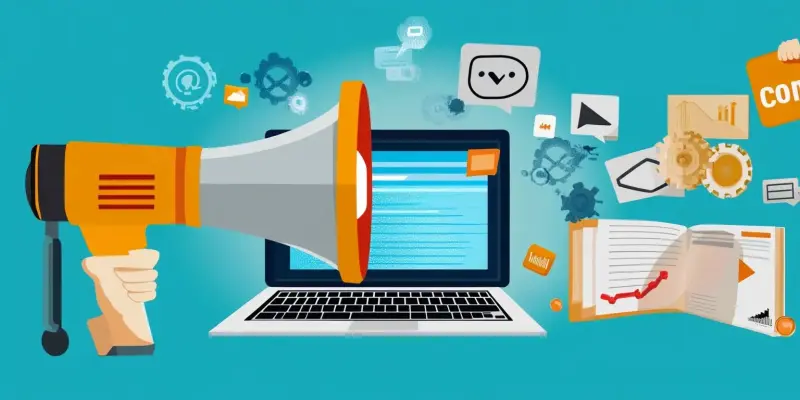Content marketing has undergone significant changes over the years, and 2025 is no exception. As digital marketing continues to evolve rapidly, understanding key trends and consumer behavior shifts is crucial for brands aiming to effectively engage their audiences. This article explores the transformative trends in content marketing as of 2025, highlighting the integration of advanced technologies, the rise of various media formats, and the increasing emphasis on personalization, ethical practices, and sustainability.
AI-Driven Content Creation
Artificial Intelligence (AI) has become integral to modern content marketing strategies, streamlining content creation, optimization, and personalization. AI tools like ChatGPT, Jasper, and Gemini 2.0 allow marketers to automate repetitive tasks, produce high-quality content swiftly, and focus on strategic initiatives. These tools analyze vast data sets to generate personalized experiences, enhancing content relevance and engagement. As brands tap into AI’s potential, the ability to quickly adapt content based on real-time data insights has become a game-changer, helping them stay ahead in a competitive market.
Beyond content generation, AI optimizes SEO strategies, predicts audience preferences, and crafts video scripts. This enables marketers to reallocate resources to more creative and strategic tasks, ultimately improving efficiency and effectiveness. AI’s role in content marketing extends to various formats, including text, video, and interactive media. By leveraging AI, brands can ensure their content is not only high-quality but also tailored to meet the specific needs and preferences of their target audience. The integration of AI into content marketing strategies encourages innovative approaches that elevate both brand engagement and customer satisfaction.
Dominance of Short-Form Video
Short-form video content has taken the digital sphere by storm, with platforms like TikTok, Instagram Reels, and YouTube Shorts becoming key players. These videos cater to the mobile-first generation, providing quick, engaging content suited to diminishing attention spans. The versatility of short-form videos makes them effective for storytelling, product demonstrations, and behind-the-scenes insights. Brands that can create compelling short-form videos are well-positioned to increase their reach and engagement, as algorithmic potential for virality enables them to connect with broader audiences beyond their existing followers.
Short-form videos are particularly effective in capturing the attention of younger demographics, who are more likely to engage with and share this type of content. Additionally, the production of short-form videos is often less resource-intensive compared to longer formats, making it an attractive option for brands with limited budgets. The ability to quickly produce and distribute content allows for more agile marketing strategies, keeping brands relevant and top-of-mind for consumers. Furthermore, the emphasis on authenticity and creativity in short-form videos can help brands foster a genuine connection with their audience, driving loyalty and advocacy.
Interactive and Immersive Media
Augmented Reality (AR) and Virtual Reality (VR) are transforming consumer-brand interactions by offering immersive, interactive experiences. Brands use AR/VR for virtual try-ons, product visualizations, and interactive storytelling to enhance engagement and build loyalty. These technologies provide a unique way for consumers to interact with products and services, creating memorable experiences that drive brand affinity. As AR/VR applications extend into various sectors, such as retail, travel, and education, they continue to open new avenues for engaging and impactful content marketing strategies.
For instance, virtual try-ons allow consumers to see how products will look on them before making a purchase, reducing the likelihood of returns and increasing customer satisfaction. In the travel industry, virtual tours offer a taste of destinations, enticing potential travelers to book trips. Interactive and immersive media also provide opportunities for innovative marketing campaigns. Brands can create virtual events, interactive games, and other engaging experiences that capture the imagination of their audience. As AR/VR technology continues to advance, the possibilities for creative content marketing are virtually limitless, paving the way for unforgettable consumer experiences.
Hyper-Personalization
Meeting consumer expectations for personalized experiences is imperative in 2025. Brands are adopting hyper-personalization through advanced data analysis, which spans the entire customer journey. This includes product recommendations, social media interactions, and beyond. AI and machine learning drive this trend, improving engagement, conversion rates, and customer loyalty by delivering tailored content. Hyper-personalization involves analyzing consumer behavior, preferences, and past interactions to create highly relevant content, enhancing the user experience and increasing the likelihood of conversions.
Consumers are more likely to engage with content that speaks directly to their needs and interests. Brands that excel in hyper-personalization can build stronger relationships with their audience. By consistently delivering relevant and valuable content, they can foster trust and loyalty, ultimately driving long-term success. As consumer expectations for personalized experiences continue to rise, brands must invest in the tools and strategies necessary to meet these demands. Success in hyper-personalization hinges on the ability to gather and analyze data effectively, ensuring that every interaction with the consumer feels personalized and meaningful.
Cross-Channel Content Integration
Content marketing has changed drastically over the years, and 2025 continues this trend. With digital marketing evolving at breakneck speed, comprehending current trends and shifts in consumer behavior is essential for brands wanting to engage effectively with their audiences. This article delves into the significant transformative trends in content marketing seen in 2025.
Among the major developments is the integration of advanced technologies. Automation and AI have become cornerstone elements, enabling brands to craft more precise and targeted content. The rise of different media formats is also noteworthy. Video content, podcasts, and interactive media have taken center stage, capturing the attention of diverse audiences.
Personalization is another focal point. Brands are increasingly tailoring their content to individual preferences and behaviors, making engagement more meaningful and relevant. Ethical practices are gaining prominence as well, with consumers increasingly concerned about transparency and ethics in marketing. Brands committed to ethical practices and sustainability are more likely to win consumer trust and loyalty. Overall, the landscape of content marketing in 2025 reflects a blend of technological innovation, media diversification, personalized engagement, and responsible marketing practices.

